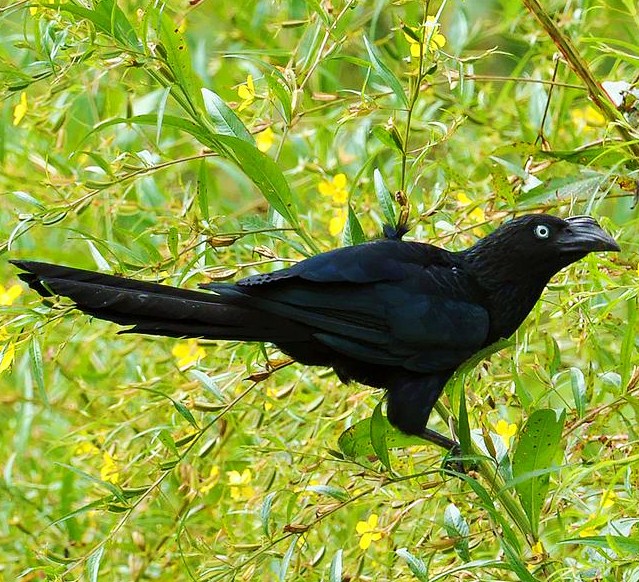Greater ani

Crotophaga major
 |
| Photo by Cláudio Timm (Encyclopedia of Life) |
Common name:
greater ani (en); anu-coroca (pt); ani des palétuviers (fr); garrapatero (es); riesenani (de)
Taxonomy:
Order Cuculiformes
Family Cuculidae
Range:
These birds are found from Panama and Trinidad, across much of tropical South America east of the Andes and down to northern Argentina.
Size:
Greater anis are 46-48 cm long and weigh 130-230 g.
Habitat:
They occur in forested lowlands adjacent to water, particularly those with partly inundated banks and sluggish or standing water. This includes bamboo stands and mangroves, flooded forest, gallery forest, swamps, marshes, and lake and creek edges. They are present from sea level up to an altitude of 800 m.
Diet:
The greater ani mostly eats insects, particularly Orthoptera, Phasmatodea, Odonata, Lepidoptera, Blattodea, and Coleoptera. They will also take fruits, berries, Euphorbia seeds, arachnids, small lizards, small frogs and, occasionally, fishes.
Breeding:
These birds breed in April-December. They are communal nesters, with groups of 2-4 socially monogamous pairs using the same nest. These groups sometimes also include helpers, typically young birds from the previous year. The nest is a bulky, open-cup structure of small sticks, usually placed in isolated emergent vegetation near the shore, or in branches of shoreline vegetation that extend several meters over the water. There, each female lays 3-7 blue eggs. The eggs are uniformly coated with a white, chalky layer of vaterite, which disappears during the incubation process. The eggs are incubated by all members of the group for 11-12 days. The chicks are fed and brooded by all group members and fledge 8-10 days after hatching, but only become fully independent 6 weeks later.
Conservation:
IUCN status – LC (Least Concern)
This species has an extremely large breeding range. Although the global population size has not been quantified, this species is described as fairly common and seems to be locally abundant in areas of appropriate habitat, particularly in upper Amazonia. The population is suspected to be stable in the absence of evidence for any declines or substantial threats.
































